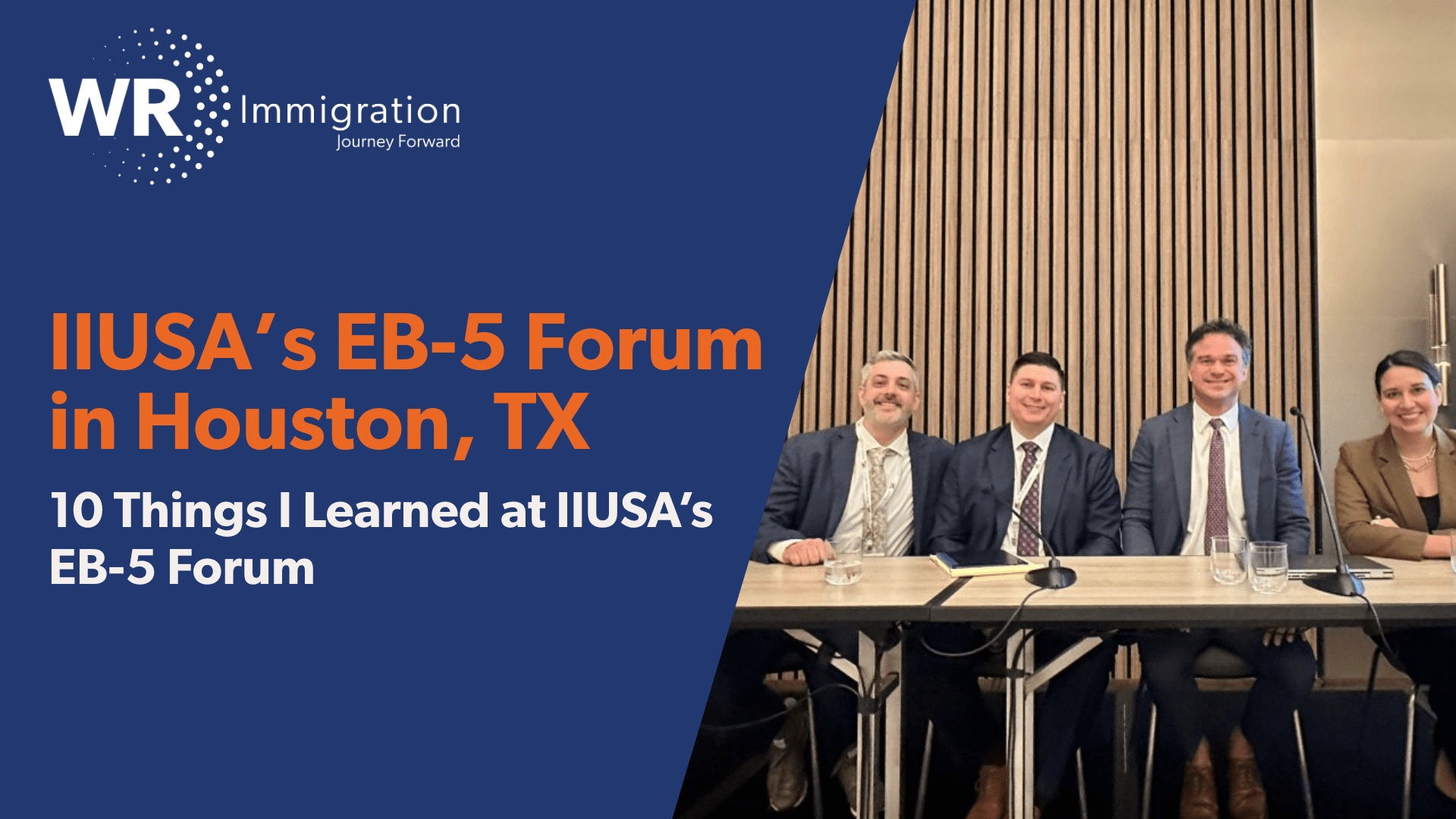By: Joey Barnett
I just returned to California after a well-attended EB-5 Industry Forum put on by Invest In the USA (IIUSA) and want to share the top 10 EB-5 things I learned in Houston, Texas:
- There has been little to no legislative discussion to date regarding Mr. Trump and Mr. Lutnick’s Gold Card proposal, and it appears that Congress would likely need to vote through a reconciliation process to change the Immigration and Nationality Act and move the proposal forward.
- According to IIUSA’s independent study, it has taken an average of 9 months for USCIS to approval a rural Form I-526E, and about 16 months for USCIS to approve a High Unemployment Area Form I-526E. This is consistent with WR Immigration‘s practice, particularly when there is approved Form I-956F.
- EB-5 Regional Centers are looking at the September 30, 2026 “grandfathering” deadline – which will protect immigrant investors who filed beforehand, in the event Congress does not extend the Regional Center program – as a fundraising deadline too, and many are seeking to file Form I-956F in the coming months to best market their EB-5 projects to prospective investors.
- Over the last 12 months, the percentage of Rural Form I-526E filings has grown from 48% to 70%, with a corresponding decrease in High Unemployment Areas. I spoke with numerous Regional Centers who discussed the challenges of finding good rural projects for EB-5, and who are also looking at smaller, High Unemployment Area projects too.
- According to Customers Bank‘s internal data, over 40% of EB-5 applicants are already in the United States and have filed an adjustment of status concurrently with the Form I-526E. This percentage jumps to 85% for Indian-born nationals.
- There is already substantial demand for the reserved visa category numbers pending at USCIS which, if approved, will take up the supply of such visa numbers for the foreseeable future. It is critical to understand the likelihood and impact of retrogression before making a huge $800,000 investment.
- Form I-829 denials due to no job creation, misappropriation, or re-adjudication of source of funds are on the rise, as are the issuance of Notices to Appear (NTAs) with the denial notice which commences removal proceedings.
- Having a pending Form I-485 and being in a period of stay authorized by the U.S. Attorney General does not, by itself, provide a basis for a second adjustment of status petition for a subsequent EB-5 filing, should a Form I-956F or initial Form I-526E be denied.
- Investing in a Regional Center project with an approved Form I-956F can mitigate immigration risk but confirms nothing about financial risk, likelihood of repayment, or actual job creation required to remove the EB-5 conditions.
- U.S. Consulates in Guangzhou and Ho Chi Minh City are issuing summary dismissals/denials on DS-260 related to communist party membership, sometimes without the opportunity to rebut any claim of inadmissibility.
WR Immigration is a full-service immigration law firm known worldwide for its unmatched excellence in providing top-quality U.S. immigration representation. To discuss your EB-5 questions, please contact JBarnett@wolfsdorf.com


